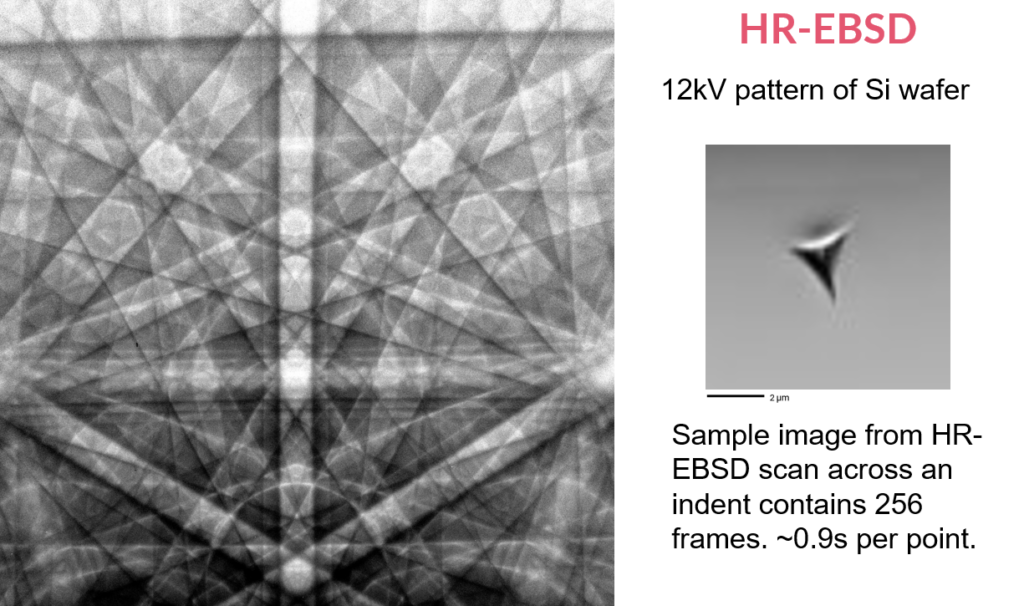The SEMCam records high quality EBSD patterns from 3-30 kV.
Our first SEMCam was installed for Prof. Gianola at the University of California at Santa Barbara. See some of their initial results in Ultramicroscopy.
SEMCam is the first and only commercially-available MAPS direct detector for scanning electron microscopes. It features the 10th generation of our revolutionary Direct Detection Device (DDD®) sensor. In addition to dramatically better sensitivity and higher resolution patterns, the SEMCam also delivers full-frame unbinned streaming at up to 92 frames per second (fps). For higher speeds, users acquire data at 281 fps with full-frame readout and 2×-binning, and substantially faster frame rates can be achieved by reducing the readout array size.

Based on our longstanding high-performance TEM cameras, SEMCam delivers state-of-the-art sensitivity and unique features that make them ideal for a wide range of low voltage electron microscopy applications. SEMCam allows for direct detection of 3 – 30 keV primary electrons—a revolutionary advancement in data quality.
Direct electron detection for EBSD of low symmetry & beam sensitive ceramics, article in Ultramicroscopy. MAPS Direct detector yields superior EBSPs of low symmetry, charge-sensitive ceramics.
Dislocation cells in additively manufactured metallic alloys characterized by electron backscatter diffraction pattern sharpness, article in Materials Characterization. Demonstrates the use of EBSD pattern sharpness to characterize dislocation of cells.
Direct Detectors and Their Applications in Electron Microscopy for Materials Science, article in Journal of Physics : Materials. Reviewing direct detectors in materials science electron microscopy.
SEMCam is ready to order now.
Looking for something else? We offer a full range of products for electron microscopy:
Apollo | Celeritas | DE Cameras | LV-16 | DE Freescan | Software
If you have questions about our products, head to our FAQ page, or contact us to learn more.